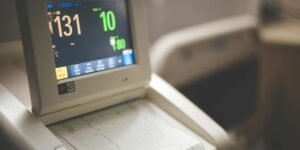
Measuring Blood Pressure At Home: Types of Aphygmomanometers, Location and Posture for Measuring Blood Pressure, Blood Pressure Standards, and Precautions
Blood pressure is the pressure generated by blood flowing in the arteries. Whether blood pressure is too high or too low, it may have a negative impact on the human body, and high blood pressure is particularly common. Taking blood pressure measurements at home can help people with high blood pressure monitor and improve their blood pressure, thereby reducing the risk of heart disease or related complications. What are the precautions for measuring blood pressure at home, such as the time, posture, and location of measuring blood pressure? How to measure blood pressure? Let this article help you understand all kinds of questions.
Basic concepts of blood pressure
Blood pressure is the pressure of blood in the arteries. Measuring blood pressure at home can help monitor blood pressure at home. The sphygmomanometer will record 2 values, both in millimeters of mercury (mmHg):
- Systolic Pressure: represents the highest value of blood pressure when the heart contracts.
- Diastolic Pressure: represents the lowest value of blood pressure when the heart relaxes.
For example, if the measured systolic blood pressure is 120mmHg and the diastolic blood pressure is 84mmHg, the measurement record displayed by the sphygmomanometer is 120/84. Generally, for normal blood pressure, systolic blood pressure should be lower than 120mmHg, and diastolic blood pressure should be lower than 80mmHg.
Types of blood pressure monitors
Currently, there are three main types of blood pressure monitors available for purchase and use on the market:
Traditional blood pressure monitor
Traditional sphygmomanometers are divided into gauge type and mercury type. Both measure blood pressure through an arm cuff, stethoscope or microphone that needs to be manually pressed and inflated. How to use it:
Inflate and deflate the cuff manually and listen for pulse with a stethoscope. Blood pressure will be displayed on a disc with a pointer. When the arm cuff is inflated and the pressure increases, the pointer will move clockwise; when the arm cuff is deflated and the pressure decreases, the pointer will move counterclockwise. The systolic blood pressure is the number pointed by the pointer when the pulse is first heard after the arm cuff is deflated; the number pointed by the pointer at the moment the pulse sound disappears is the diastolic blood pressure.
Blood Pressure Monitor
It is a battery-operated blood pressure measuring instrument. How to use it is as follows:
Put a tourniquet (cuff) on the upper arm, and through the process of compression, contraction and relaxation of the tourniquet, the arterial blood flow status is recorded and presented as a numerical value. In addition, earlier electronic blood pressure monitors used electronic microphones to record blood flow. This type of sphygmomanometer mainly has two measurement methods: arm and wrist. However, wrist sphygmomanometers are more likely to cause significant errors due to incorrect blood pressure measurement postures.
Portable blood pressure monitor
The portable sphygmomanometer is small in size and can be worn all day long. The wear time is usually 24 to 48 hours. The sphygmomanometer will automatically measure blood pressure at regular intervals. Your doctor may recommend this at-home measurement method if previous blood pressure measurements have yielded inconsistent results.
Why measure blood pressure at home? 4 benefits of measuring blood pressure at home
Your doctor may recommend you measure your blood pressure at home if:
- Prehypertension has been diagnosed:
systolic blood pressure between 120 and 129mmHg; diastolic blood pressure <80mmHg. - Hypertension has been diagnosed:
systolic blood pressure ≥130~139mmHg; diastolic blood pressure 80~89mmHg. - Risk factors consistent with hypertension:
long-term excess weight, excessive sodium intake, etc.
In addition, measuring your blood pressure at home has the following benefits:
- Avoid being nervous:
Some people feel nervous about going to the hospital or seeing a doctor, resulting in inaccurate blood pressure measurements in the hospital, which is the so-called “white coat hypertension”. Measuring blood pressure at home can improve this problem. situation. - Be responsible for yourself:
Establishing the habit of measuring your own blood pressure can help you control your own blood pressure status, giving you more responsibility and motivation to maintain your blood pressure within the standard range, so you can start paying attention to your health and start changing your lifestyle or habits. - Convenient and time-saving:
Having a blood pressure monitor at home can save you the trouble of going to the hospital or clinic every time your blood pressure is measured. - Help doctors treat your condition:
The blood pressure values you record regularly at home are also one of the considerations doctors take into consideration when understanding your condition or making relevant medical decisions.
When should you take your blood pressure? How many times do you need to measure? Understand the “722” blood pressure measurement principle
People over the age of 18 should measure their blood pressure at home at least once a year, and follow the 722 (please measure) principle:
“7”: Measure for 7 consecutive days.
“2”: Measure once each after getting up in the morning and before going to bed at night.
“2”: Measure blood pressure 2 times each time, with at least 1 minute interval in between.
Things to note when measuring blood pressure at home: Posture, location, time
- Calibrate the sphygmomanometer regularly. The tourniquet must be able to surround the upper arm at least 1 and a half times and cover 2/3 of the upper arm. The circumference of the tourniquet must exceed 80% of the upper arm circumference.
- A high blood pressure value does not necessarily mean you have high blood pressure. Your measurement method, mood, and time may cause changes in blood pressure, so it is recommended to continue measuring for at least 1 to 2 weeks before making a judgment.
- Usually blood pressure is higher in the morning and lower in the evening, so it is recommended to measure your blood pressure at least twice a day, for example once after getting up and once before going to bed, to get the average blood pressure.
- Since the blood pressure of the left and right arms may be different, when measuring blood pressure for the first time, please measure the blood pressure of one arm after an interval of 1 to 2 minutes, and then measure the other arm again. The blood pressure value of the higher value shall prevail. Just measure the arm on that side. However, if the blood pressure difference between the left and right hands is too large (more than 20mmHg), it may mean that there is a disease in the blood vessels, and you should seek medical examination as soon as possible.
Preparation process for measuring blood pressure at home
Before measuring blood pressure, you should do the following:
- Make sure you are comfortable and relaxed, and avoid taking your blood pressure after activity, when you are angry, or wearing heavy clothing.
- You should avoid smoking, eating, caffeinated drinks, exercising, and going to the toilet 30 minutes before taking your blood pressure to keep your mood calm.
- If you are not using an electronic sphygmomanometer, please keep the measurement environment quiet so that you can hear your pulse clearly.
- Before taking your blood pressure, you should sit in a chair and rest for at least 5 minutes, avoiding crossing your legs.
In addition, unless instructed by your doctor, you should not adjust your blood pressure medications based on blood pressure measured at home.
Steps to measure blood pressure at home
When starting to take your blood pressure, you should pay attention to the following:
- Do not move, talk or cross your legs while taking your blood pressure.
- Tie the tourniquet: The front edge of the tourniquet should be fixed 2 to 3 centimeters above the inward bend of the elbow. Then adjust the elasticity so that the tourniquet remains about 1 finger width from the shoulder of the arm. Place the center of the tourniquet or the stethoscope. Place it at the brachial artery (4 to 5 fingers above the elbow bend).
- After tying the tourniquet, bend your arm slightly and place it still on the table at the same height as your heart, with your palm facing up.
- If you are using an electronic sphygmomanometer, you can directly press the button to start measurement. If you are using a traditional sphygmomanometer, you must manually press it to push air into the arm cuff. Please press it slowly until you can no longer hear the pulse sound, and then inflate it to let the mmHg count It rises about 30mmHg. At this time, please deflate slowly (decrease 1~2mmHg per second) and pay attention to the blood pressure reading. The first pulse sound you hear is the systolic blood pressure. Then continue to deflate until you hear the last pulse sound. It’s diastolic blood pressure.
- The electronic sphygmomanometer will automatically display the blood pressure reading and relax the tourniquet; the traditional sphygmomanometer requires you to manually deflate the air completely after recording the blood pressure reading.
- If you do not need to use it again, you can remove the tourniquet and put the blood pressure monitor away, and record your blood pressure and the measurement date and time. You can even record your daily activities, such as what time you took your medicine. , mood, and stress can help doctors adjust your medications more based on your condition.
Blood pressure standard range
As mentioned earlier, the normal blood pressure for adults should fall below 120/80mmHg. If your blood pressure is only a little more than a little, you are in the pre-hypertension stage and need to start paying attention. In addition, if the blood pressure is lower than 90/60mmHg, there is a problem of hypotension. If you have concerns about your blood pressure readings, please consult your physician directly.












